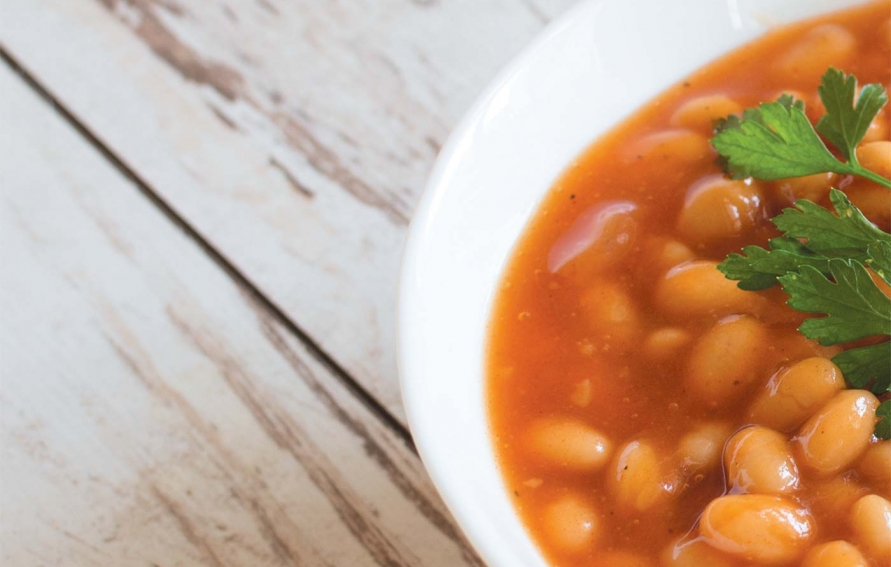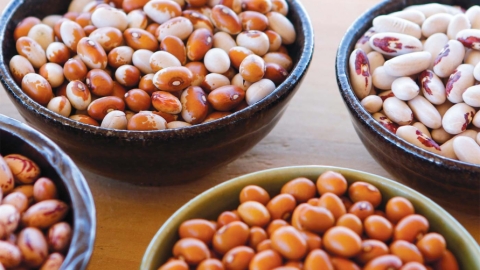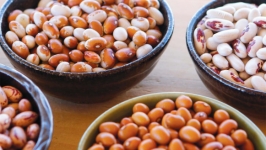Ingredients
- 1 lb. dry marafax beans (2 lbs. cooked weight)
- 1½ quarts cooking water
- 1 medium to large yellow onion, diced
- ¼ cup maple syrup (double if you like ’em sweet)
- 2 tablespoons brown sugar
- 1 tablespoon Dijon mustard
- 1 tablespoon applewood smoked sea salt
- 1 tablespoon tomato paste
- ½ inch freshly grated ginger
- ½ tablespoon smoked paprika
- ½ tablespoon white pepper
- 2 tablespoons apple cider vinegar (after beans are soft)
Preparation
Soak your beans ahead of time. Drain, top with fresh water, and bring to a boil at medium heat inside a Dutch oven. Once brought to a boil, reduce heat to medium-low, keep a lid on the pot—slightly ajar—and stir in all your other ingredients, save for the vinegar.
Once your beans are beginning to soften and the skins peel off when removed from the cooking liquid, take a bean and taste it to make sure it’s not chalky. If it’s all set, you can stir in your apple cider vinegar. Make sure you have about ½ inch of water column above your beans, and transfer the Dutch oven to the oven with the lid on.
Warm up your oven to 300ºF. Some recipes call for 1 hour on the stovetop or 2 hours in the oven, some for as much as 8 hours. And others for every point in between. The big idea is the longer they sit in the oven, the thicker and more cohesive the result will be. The sugars will have more time to interact with the amino acids present and caramelize by way of the Maillard reaction. So you ultimately could skip the oven step if you are in a rush. They will be good even then.
But if you want them to be great, put them in the oven for at least a couple of hours, and up to 8. Be sure to check on them every hour or so to make sure they have enough liquid in there to keep them from drying out.
If you have a wood cookstove as your home’s central heating—as was the case for most of the last few hundred years—it’s easy enough to let the beans bake away all day.
If you have a gas or electric stove, you have to balance out that desire to level-up your baked bean game with the indulgence of using that much energy for one dish. This meal is, after all, just a modern interpretation of bean-in-hole preparations, which passively cooked the beans 12 to 24 hours in a bed of coals, covered and insulated by a few feet of earth.









